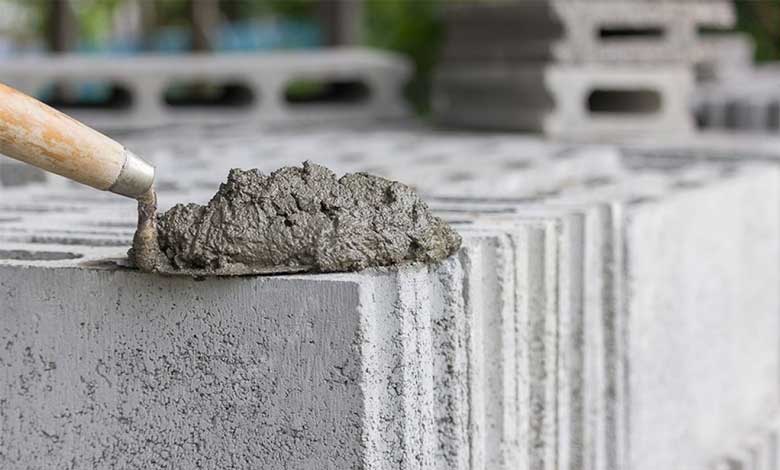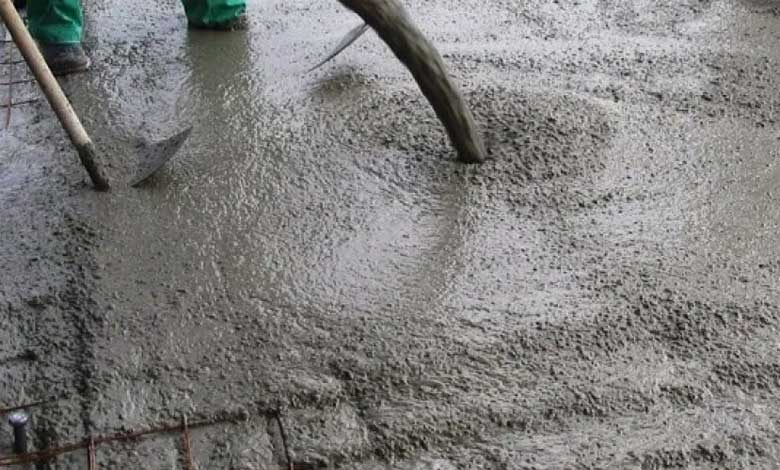What is concrete grade?
In construction projects, we hear the term “concrete grade” extremely when determining the concrete mixing plan. The importance of concrete grade is so high that it can determine the final characteristic strength of concrete. This determines the concrete components and lets contractors know how much material they need for each member of the structure, including beams, columns, foundations, and roofs. For this reason, in this article we will talk in detail about concrete grade
Definition of concrete grade

Concrete grade indicates the amount of cement in the concrete mix. For example, they say: “Concrete with a grade of 150” This number means that the amount of cement in the concrete mix per cubic meter is equal to 150 kg. A value of a grade is determined for each member of the structure to achieve the desired strength. The amount of cement used is determined based on the type of application, strength (concrete grade) and experimental relationships.
Importance of concrete grade
The use of concrete with different grades is one of the important factors in today’s constructions. In a construction project, each member of the structure, including the roof, foundation, column, wall, etc., needs a certain characteristic strength because each of them can resist a different amount of load. This is where the amount of grade and along it, the concrete components including sand, gravel and water are determined.
In fact, grade determines the following three important factors:
- Strength or the same as compressive strength
- Other ingredients
- Structural member
In accordance with the above, the amount of construction work grade is predetermined, which includes the following:
- The grade of columns, beams, foundations and members of structures is usually between 300 to 500 kg of cement per cubic meter of concrete.
- Roof beam grade of 350 kg per cubic meter of concrete
- Steel supply ceiling grade 350 kg per cubic meter of concrete
- Cement mortar grade between 150 to 350 kg of cement per cubic meter of mortar
- Cement grade used in flooring is 225 kg per cubic meter of mortar
- Consumption of cement for tiling 400 kg per cubic meter of slurry
- Cement mortar grade for stone facade 430 kg per cubic meter of grout
- Cement sand mortar grade between 150 to 350 kg of cement per cubic meter of mortar
- Cement grade of block between 100 to 300 kg of cement per cubic meter of mortar
- Grade in concrete except equal to 150 kg of cement per cubic meter of concrete
- Cement grade for coating 300 kg of white cement in one cubic meter of mixture

The relationship between grade and characteristic resistance
It can be easily understood that the amount of cement is directly related to the final strength of concrete. The more cement used, the higher the strength of the concrete. This increase in the amount of cement has a certain limit because it affects the properties of concrete. For this reason, according to the theoretical-experimental relationships and the amount of concrete grade, the amount of cement used can be estimated.
For example, grade C35 represents 28-day strength concrete under cylindrical tests of 35 . To achieve this amount of strength, the cement grade should be 450 .
You can also use the experimental formula to determine the amount of cement and strength. In this regard, is the characteristic strength of concrete according to the Iranian Concrete Codes (ICC) and standard cylindrical specimens in megapascal and w is the grade of cement in kilograms per cubic meter.
Let us explain with an example:
If the characteristic strength of concrete is 25 , the cement grade will be approximately 350 .
Now, by obtaining the amount of cement and having the ratio of water to cement, the amount of sand can be calculated in the form of a workshop.
In the table below, you can see the approximate amount of strength, grade and required materials of concrete and workshop:
| Concrete category | The amount of cement | The amount of gravel | The amount of sand | The amount of water | Specefic Weight |
| C10 | 150 | 460 | 1380 | 160 | 2150 |
| C30 | 400 | 700 | 1060 | 220 | 2380 |
| C35 | 450 | 680 | 1030 | 240 | 2400 |
| C40 | 500 | 660 | 1000 | 260 | 2420 |
Also, the average compressive strength required in the event that results are not available to determine the standard deviation in accordance with national building regulations (Section 9) is as follows:
| Concrete category | Formula for calculating the average compressive strength ( ) |
| C12 and below | Fcm=Fc+6 |
| C16 | Fcm=Fc+7.5 |
| C20 | Fcm=Fc+8.5 |
| C25 | Fcm=Fc+9.5 |
| C30 and C35 | Fcm=Fc+10.5 |
| C40 and above | Fcm=Fc+11 |
Concrete grade based on different standards
Depending on the strength and composition of the concrete, different grades of concrete mix are offered by the English standard. In this standard, the concrete reaches its minimum strength after 28 days. Concrete grade is calculated in Megapascal ( ), where M represents the concrete mix and represents the amount of compressive strength.
Different mixtures (M) are available in different proportions of different elements of cement, sand and gravel. For example, the M20 is found in ratios of 1: 1.5: 3. The following table lists other items:
| Concrete Grade | Ratio of cement, sand and gravel | Compressive strength (MPa) |
| M5 | 10:5:1 | 5 |
| M7.5 | 8:4:1 | 7.5 |
| M10 | 6:3:1 | 10 |
| M15 | 4:2:1 | 15 |
| M20 | 3:1.5:1 | 20 |
| M30 | 2:1:1 | 30 |
| M40 | Must be designed | 40 |
| M45 | Must be designed | 45 |
| M50 | Must be designed | 50 |
The last word
Grade is an integral part of the concrete industry. This indicates the amount of cement in the concrete mix and is directly related to the 28-day compressive strength of concrete. Without knowing the amount of grade, the concreting process cannot be done because determining the amount of cement determines the amount of water and aggregates. A standard amount is required for each part of the construction work to prevent an unreasonable increase in construction costs.










Leave A Comment